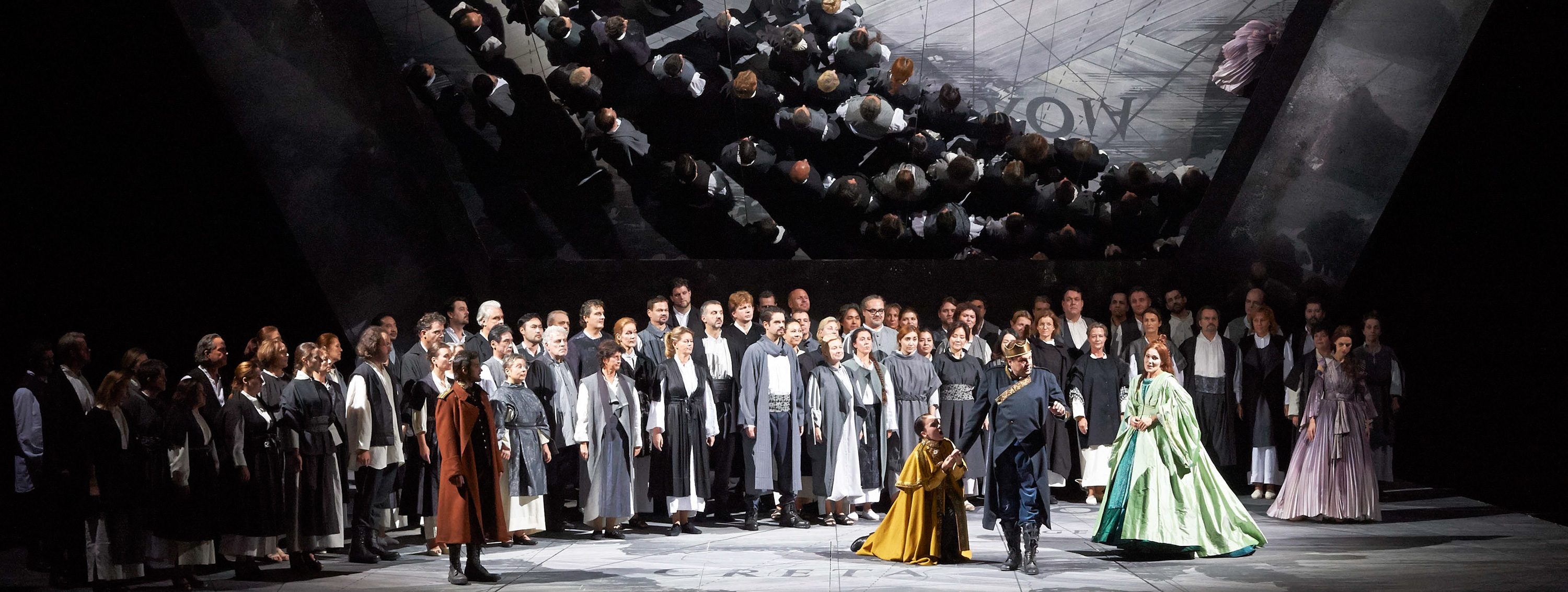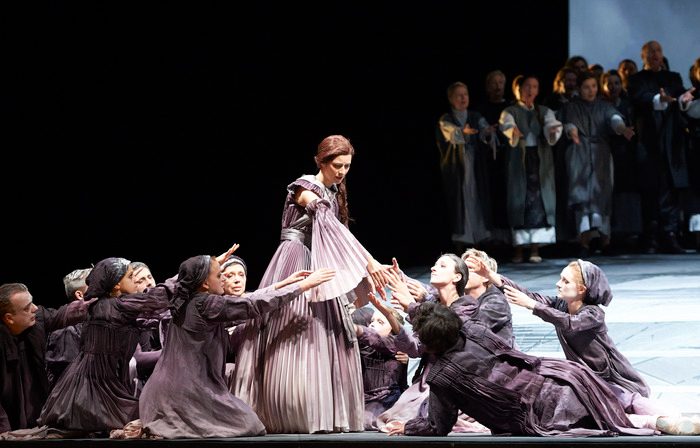About the Production
It tells the story of the Cretan king Idomeneo from Greek mythology, who, after returning from the Trojan War, has to choose between the life of his son Idamante and the welfare of his people. Salvation from the dilemma comes through the love between Idamante and the Trojan king's daughter Ilia, who lives on Crete as a prisoner of war.
Idomeneo, rè
di Creta
Storyline
The Trojan War is over.
Idomeneo, King of Crete and victorious commander of the Greek army, is on his way home. But a storm at sea prevents his happy landing. Only his oath to sacrifice the first human being he encounters on land when he is rescued from mortal danger calms the sea.
However, the first human being is his son Idamante. He is in love with the Trojan king's daughter Ilia, who lives on Crete as a prisoner of war - and she with him. But Elettra, who has fled Argos after the murder of her mother Clytemnestra and found refuge in Crete, also loves Idamante and believes in a future at his side.
To save his son from being sacrificed, Idomeneo wants to send him and Elettra to Argos, where they are to rule as the new king and queen. However, this plan fails and Crete is ravaged by destruction and chaos.
However, this plan fails and Crete is ravaged by destruction and chaos. Idomeneo vacillates between sacrificing his son and saving his people. When he decides in favor of his people and against his son, Ilia prevents him from being killed and offers himself as a sacrifice. However, this does not happen. Idamante frees himself from his overbearing father and takes up the reign of Crete with Ilia. Idomeneo and Elettra fall prey to the demons of their past.
For Danish director Kasper Holten, the focus is on power and corrupted power, and he also pays particular attention to the emotional and biographical baggage of the characters involved, which they have to carry. For Holten, Idomeneo himself is a ruler who has become accustomed to power and can no longer let go of it. The director recognizes the positive exception among the powerful in Idomeneo's son Idamante, who for this very reason is seen by everyone else as the only possibility for an urgent new beginning.
Idomeneo is Mozart's first grand opera, as he called it. Countless new approaches, riches never heard before, surprises, a highly complex orchestral treatment, visionary passages - in short, the audience can expect an opera full of enlightened youthful appeal. The French influence, for example that of Rameau, can be clearly heard in the seamless transitions between recitatives and arias or ensemble numbers as well as in the continuous dramatic momentum. Mozart also succeeded in creating psychologically extremely sophisticated characters, all of whom are in a constant state of emotional development - not least in the extensive accompagnato recitatives, which give the figures a very special plasticity.
With the opera seria Idomeneo, Mozart entered the opera stage in 1781 as a mature composer, although he was only 25 years old. The libretto, written by the Salzburg court chaplain Giambattista Varesco, can be traced back to French sources. The creation of the opera is very precisely documented thanks to the detailed correspondence between Mozart and his father, in particular Mozart's response to the respective abilities of the singers at the premiere. After the successful world premiere in Munich, Mozart revised the work for a Viennese performance. Idomeneo was first performed at the Vienna State Opera in 1879; the current production dates from 2014.







